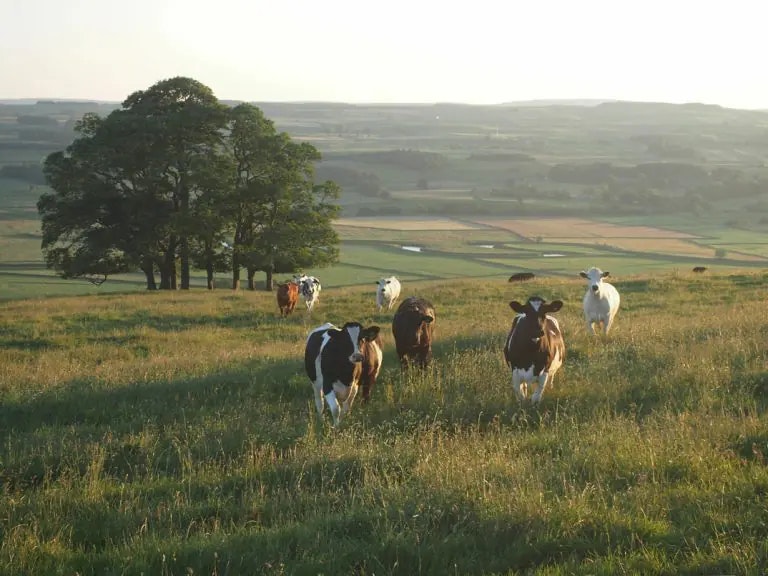Pastureland

There are approximately 107,000 acres of pasture and range land in Nevada County. These lands provide forage for beef cattle, dairy cows, sheep, goats, horses, and other domestic livestock, as well as many species of wildlife that depend on these lands for food and cover. Well-managed range and pasture can capture rainwater that is slowly infiltrated into the soil (helping recharge groundwater sources) and prevent overgrazing. Overgrazing is seen as a cause of the spread of invasive species of non-native plants and weeds. Fire is also an important regulator of range vegetation, whether set by humans or resulting from lightning. Fires tend to reduce the abundance of woody plants and promote blooming plants including grasses, forbs, and grass-like plants. The suppression or reduction of periodic wildfires invites the dominance of trees and shrubs to the near exclusion of grasses and forbs.
Pasture
Pasture is generally comprised of native or introduced vegetation (forage) used for grazing livestock and receives periodic management such as tilling, seeding, fertilizing, grazing, and irrigation. Pasture forage can consist of grasses, legumes, other forbs, shrubs, or a mixture. Some common introduced forage species are tall fescue, orchard grass, red and white clover, and bermuda grass.
When looking for seed mixes, there are two different types to choose from: irrigated pasture seed mix and dry pasture seed mix. The people at Nevada County Farm Supply and Peaceful Valley Farm Supply have seed mixes available that are geared toward growing in our foothills area. Both have knowledgeable staff to speak with if you are uncertain which type of seed mix you need.
But good pasture management is about more than simply growing grass for your livestock. Below are some articles, published papers, and documents to help you conserve your natural resources and keep your land healthy.
Helpful Links
Dryland Pastures: Establishment and Management in the Intermountain Region of Northern California
The Environmental Benefits of Grazing
Mitigating Heat Stress in Cattle
Placing Livestock Without the Aid of Fences: A Powerful Livestock Handling and Range Management Tool
Practices for Improving Range and Pasture Runoff Water Quality
Silvopasture: Water and Fencing Systems for CattleSilvopasture: An Agroforestry Practice
Small Ranch Manual – A Guide to Management for Green Pastures and
